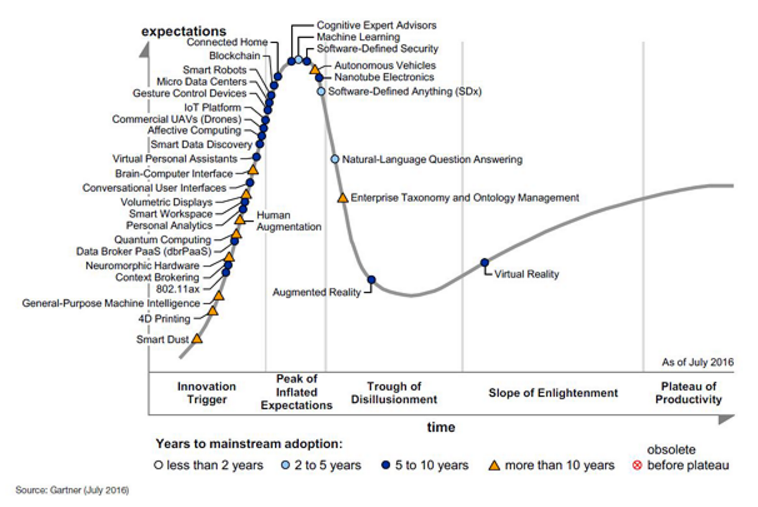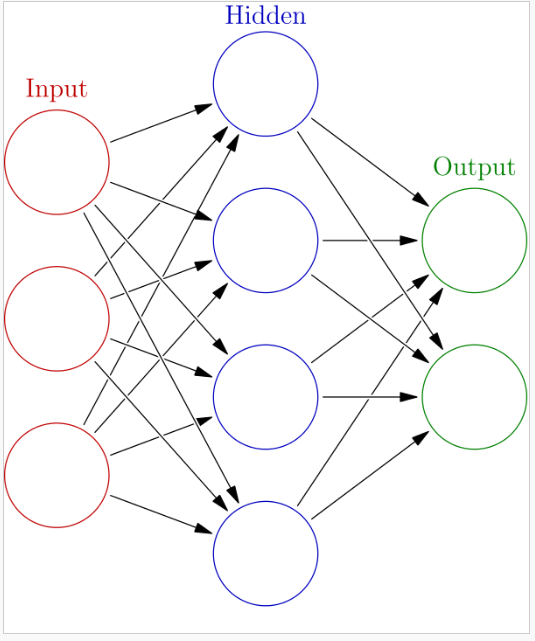
‘Smart Machines’ Top the Hype Cycle, Gartner Says

(Andrey VP/Shutterstock)
Every summer, technologists turn to Gartner’s Hype Cycle for Emerging Technologies, which has become a barometer of sorts for gauging the state of various hardware and software innovations that are expected to impact business and society over the next decade. This year, Gartner analysts have their eye on all manner of artificial intelligence technologies, including “smart machines” that can learn by themselves.
After relieving “big data” from its hype-cycle duties last year–ostensibly due to the all-encompassing pervasiveness of data in this pervasively digital age–Gartner analysts this year are talking up a swath of related “smart machine” technologies.
Smart machine technologies listed in the Hype Cycle include:
- Smart Workspaces (new)
- Smart Data Discovery (new)
- Conversational User Interfaces (new)
- Commercial UAVs (drones)
- Cognitive Expert Advisers (replaces Smart Advisors)
- Smart Robots
- Virtual Personal Assistants
- Autonomous Vehicles
- Natural-Language Question Answering
- Machine Learning
- Smart Dust
- and Connected Home.
Together, Gartner refers to these technologies as key enablers of “the perceptual smart machine age” that is currently unfolding.
“Smart machine technologies,” the analyst group says in a press release, “will be the most disruptive class of technologies over the next 10 years due to radical computational power, near-endless amounts of data, and unprecedented advances in deep neural networks that will allow organizations with smart machine technologies to harness data in order to adapt to new situations and solve problems that no one has encountered previously.”
With all the talk about the smart machines of the future, one may get the impression that machine learning technology is making progress. But in fact, the category “machine learning” was actually pushed backward along the curve. In last year’s curve, ML was on the cusp of entering the “Trough of Disillusionment.” But this year, Gartner has ML at the height of the “Peak of Inflated Expectations.” In any event, ML should start paying off in two to five years, the group says.
And while Gartner talks about the importance of “deep neural networks” for big cognitive workloads, it apparently doesn’t think that “deep learning”—which is the core underlying technology that’s enabling much of the advances in this arena—is worth adding to its report. Or maybe the group just prefers to come up with its own names for things.
In addition to smart machines, the other two macro trends identified by Gartner include the advent of platform computing and new immersive experiences.
On the platform front, Gartner says we’re in the midst of a shift from looking at computers from a technical perspective to one where they’re conceived through an “ecosystem.” “…[O]rganizations must proactively understand and redefine their strategy to create platform-based business models, and to exploit internal and external algorithms in order to generate value,” the group says.

Gartner credits neural networks with helping to drive a new smart machine age, but doesn’t discuss deep learning in its latest hype cycle (image source: Wikipedia Commons)
In terms of immersive experiences, Gartner says that technology will continue to “become more human-centric to the point where it will introduce transparency between people, businesses, and things.”
There were a few other notable items in this year’s report for big data analytic aficionados. For starters, Gartner ditched several technology categories, including “Advanced Analytics with Self Service Delivery,” “Citizen Data Science,” and “Internet of Things” from this year’s report. Other additions to the annual report include “General Purpose Machine Intelligence,” “4D Printing,” “Context Brokering,” “802.11ax,” “Neomorphic Hardware,” “Blockchain,” and “Enterprise Taxonomy and Ontology Management.”
Smart Dust Update: Despite the progression of another year, Smart Dust failed to make any headway from its initial “Innovation Trigger,” and is still more than 10 years away from reaching the “Plateau of Productivity,” according to the Stamford, Connecticut-based firm.
Related Items:
Why Gartner Dropped Big Data Off the Hype Curve
Most Hyped Tech: Big Data Out, IoT In
[wpsr_share_icons icons="twitter,facebook,linkedin,reddit,email" icon_size="40px" icon_bg_color="" icon_shape="circle" hover_effect="opacity" sm_screen_width="768" lg_screen_action="show" sm_screen_action="show" page_url="https://www.bigdatawire.com/2016/08/22/smart-machines-top-hype-cycle-gartner-says/" page_title="‘Smart Machines’ Top the Hype Cycle, Gartner Says" page_excerpt="Every summer, technologists turn to Gartner’s Hype Cycle for Emerging Technologies, which has become a barometer of sorts for gauging the state of various hardware and software innovations that are expected to impact business and society over the next decade. Read more…
" share_counter=""]


























